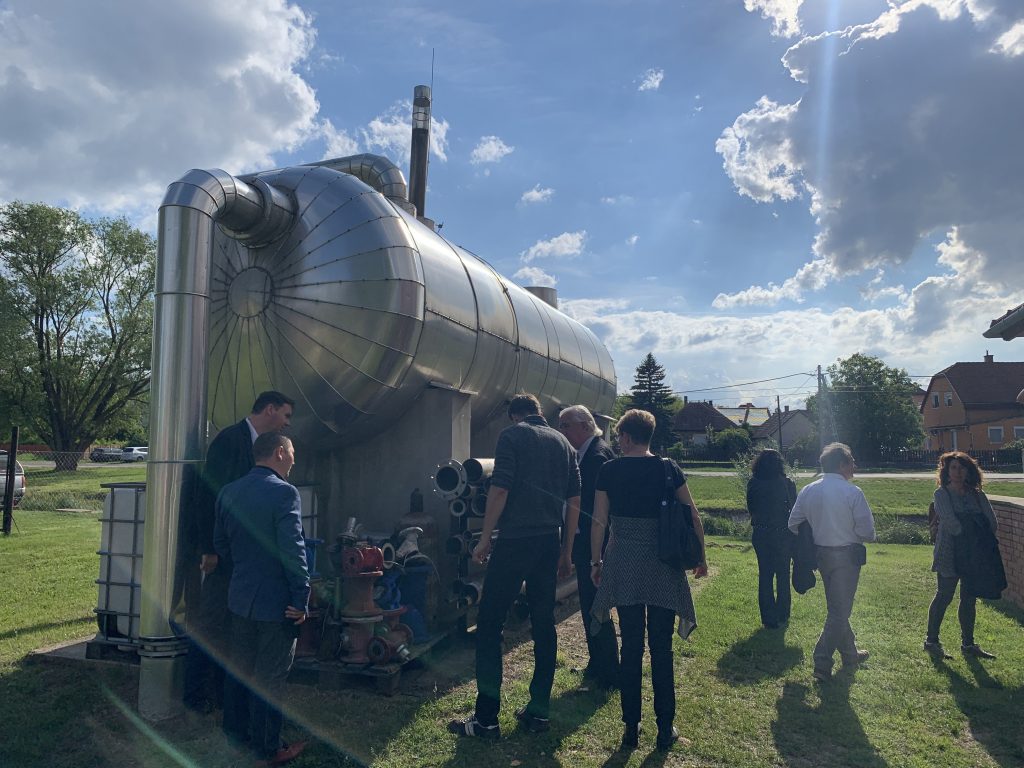Geothermal heating as economic driver – the story of Veresegyház, Hungary

The city of Veresegyház near Budapest, Hungary is an incredible showcase how the long-term view on energy security with the utilisation of geothermal energy for heating has led to economic growth and prosperity with the public and industrial players taking advantage of green and low cost heating.
During the recent Pivot2020 online event, I was part of a panel talking about the opportunities of geothermal energy. In the panel I shared the story of a case story of the city of Veresegyház near Budapest, Hungary.
With a few questions, I received I thought I’d share the story based on a great paper written by my colleague Gábor Szita, a fellow IGA Board Member. He proudly introduced us to the mayor of the city and showed us the achievements of the city during a visit to Budapest in May 2019.
The paper “How geothermal has changed people’s thinking in Veresegyház? by Gábor Szita was written for the European Geothermal Congress 2016.
Veresegyház is a small town north-east of Budapest, capital of Hungary. The first geothermal well was drilled in 1987. The water is gained from Triassic karst reservoir at the depth of 1450 m. The wellhead temperature at moderate flow-rate (30m3 /h) was 64oC. Utilization of hot water started in 1992 in an open-air swimming pool next to the well. Decision on energetic use was taken in 1993 when the grammar school was supplied by geothermal water via 680 m long pipeline. By the end of 2015 three other wells have been drilled and more than 60 consumers (heat stations) have been connected to the pipeline grid, which has been extended to 18 km long. Peoples in Veresegyház have taken to the geothermal. After 22 years of energetic use no one in the settlement wants to heat with natural gas. Investors of new buildings, either residential or public ones, and also industrial facilities require geothermal.
The geothermal ambitions have been driven largely by Béla Pásztor, an energetic mayor with a long term view, and we actually had the pleasure to meet him. As a young man, he became mayor in 1965 and still is in charge in this position today. To also highlight the impact, the population has increased from around 6,000 in 1990 it has today around 20,000 inhabitants.
The municipality of Veresegyház lead by Mr. Pásztor follows clear strategy for developing the town. One of the goals of the strategy is to mitigate dependency of energy supply from imported natural gas and to rely on local renewable energy sources.
To do so, the city drilled its first geothermal well in 1987 and ans since drilled a total of four wells. With an increasing demand the city is looking into expanding but would require to drill and funding has so far been a challenge.
A lot of public buildings, private homes, apartment blocks, swimming pool and most importantly industrial customers have profited from geothermal heating. Among the industrial customers are nearby manufacturing facilities by GE Aviation and GE Energy, a pharmaceutical company and greenhouse operations.
While in the beginning there was some public scepticism, but with all the success, there is full public support now for geothermal energy use in the city.
For the full details about the different wells, the output and impact, I suggest you read the article, linked above and below.
Thanks again to Gábor Szita and mayor Béla Pásztor for the incredible hospitality when we had the chance to visit Budapest and the city of Veresegyház.
Source: Szita, G.”How geothermal has changed people’s thinking in Veresegyház?”, European Geothermal Congress 2016.